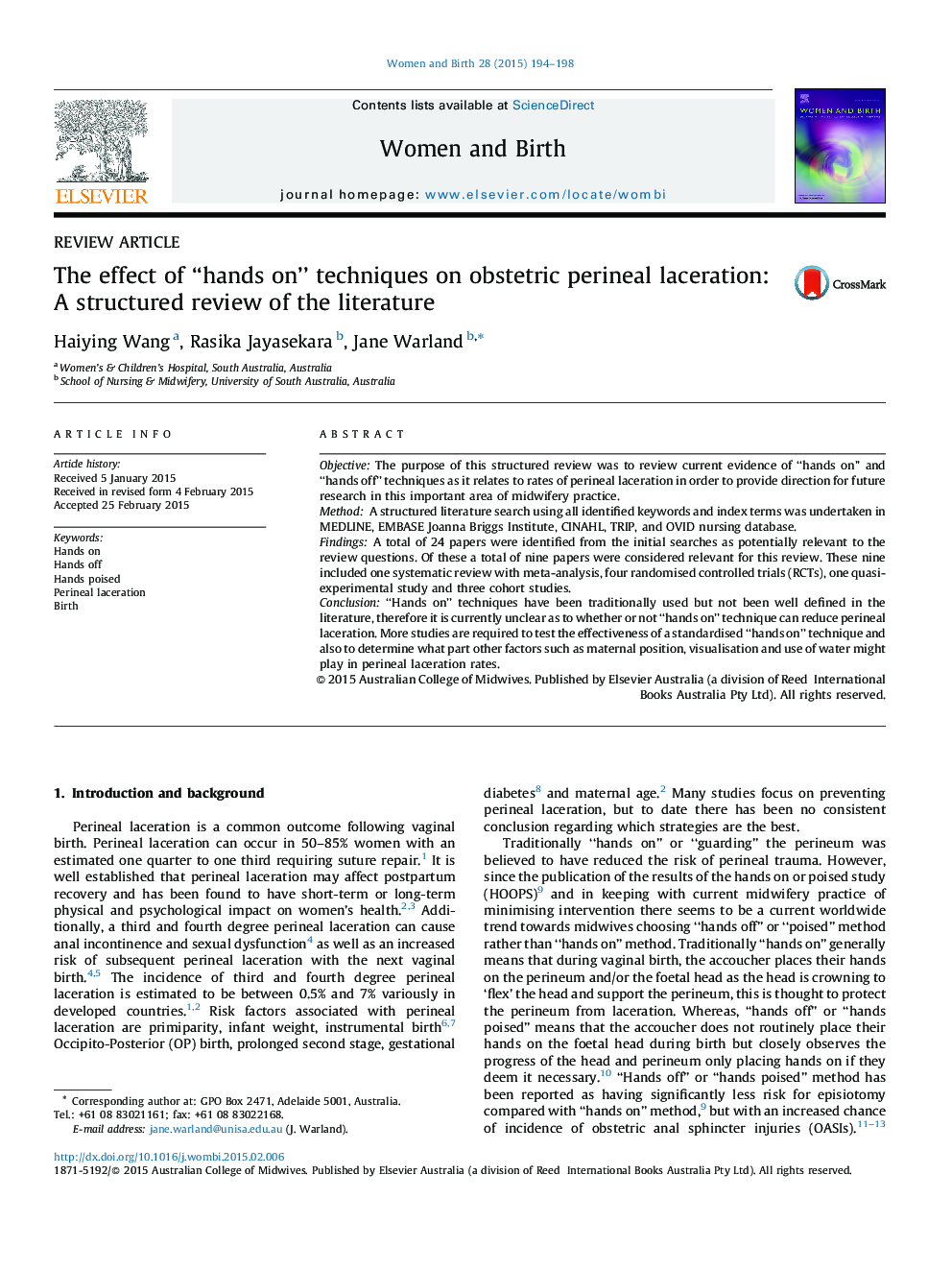| Article ID | Journal | Published Year | Pages | File Type |
|---|---|---|---|---|
| 5866156 | Women and Birth | 2015 | 5 Pages |
ObjectiveThe purpose of this structured review was to review current evidence of “hands on” and “hands off” techniques as it relates to rates of perineal laceration in order to provide direction for future research in this important area of midwifery practice.MethodA structured literature search using all identified keywords and index terms was undertaken in MEDLINE, EMBASE Joanna Briggs Institute, CINAHL, TRIP, and OVID nursing database.FindingsA total of 24 papers were identified from the initial searches as potentially relevant to the review questions. Of these a total of nine papers were considered relevant for this review. These nine included one systematic review with meta-analysis, four randomised controlled trials (RCTs), one quasi-experimental study and three cohort studies.Conclusion“Hands on” techniques have been traditionally used but not been well defined in the literature, therefore it is currently unclear as to whether or not “hands on” technique can reduce perineal laceration. More studies are required to test the effectiveness of a standardised “hands on” technique and also to determine what part other factors such as maternal position, visualisation and use of water might play in perineal laceration rates.
